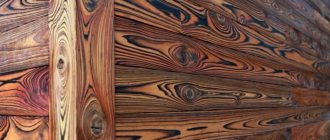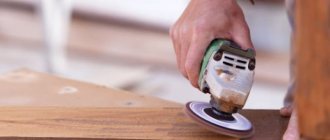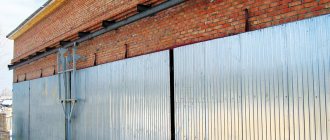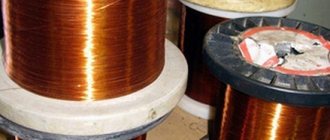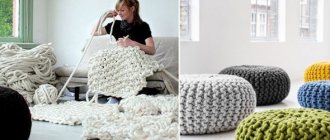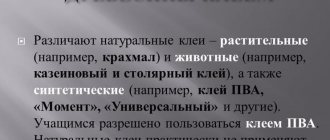The key specificity of the scheme for drying wood in a vacuum is considered to be a reduction in the time required to complete the operation provided, while maintaining absolutely all the properties of the final lumber product, and in some cases, including increasing resistance to certain operating conditions. The formation of a rarefied atmosphere in the internal size of the working chamber, in which moisture is removed from the wood, completely changes the physical properties of the heat treatment and drying process. The typical degree of vacuum at which thermal drying of wood is carried out is 0.95 mPa, and the speed of the agent of the released steam does not exceed 0.3 m3/s. Under such forcedly developed circumstances, there is absolutely no need to assemble fans, thermometers and moisture level regulators. The progress of the drying process is controlled by special sensors that set the level of readiness for the released moisture based on its number per 1 m3.
Features of vacuum drying of wood
A similar technique is used for processing wood obtained from deciduous and coniferous species. These plants have a large fiber cross-section. Heat treatment is carried out in large chambers.
There are several advantages of this effect. These include:
- Increased speed of processing wood base. In this way, it is possible to reduce the costs of production processes;
- The reduced pressure prevents the formation of cracks, bends and any defects;
- The tightness of the processes prevents the growth and reproduction of pathogenic microflora;
- Simple operation of equipment with drying chambers allows you to control the technological process remotely. In this way, it is possible to independently control the drying speed and drying time;
- Safety. The process of processing lumber in large drying chambers does not harm the environment.
Do not forget about the disadvantages of such a procedure. They are as follows:
- Big costs. For uninterrupted operation of the equipment, large amounts of electrical energy will be required, the cost of which may pleasantly surprise you;
- High cost of construction. On average, the price of vacuum wood dryers varies from 370,000 rubles to 1,000,000 rubles;
- Minimum chamber volume. When using this drying method, it is not possible to process a large amount of lumber at one time.
There are several operating modes of this device. They include:
- Soft. It is used for processing materials in order to preserve the strength and physical properties of wood;
- Normal. Heat treatment allows you to change the color of the fibers of the array, as well as change its wear resistance criteria;
- Forced. The color of the lumber becomes dark and the internal contents become brittle.
Experts recommend taking into account the type of wood, the size of the elements, the level of humidity and the properties of the vacuum dryer.
If the internal contents of the array have a humidity level of more than 25%, then drying must be carried out at a temperature of no higher than 110 degrees.
Thanks to vacuum drying, it is possible to achieve the following humidity indicators. These include:
- Wet fibers. Their humidity level is more than 55%;
- Air-dry. In this case, the percentage of moisture inside the fibers is 10-25%;
- Room - dry. When measuring humidity levels, a coefficient of no higher than 12% is observed;
- Absolutely dry. No moisture is observed in these lumber.
Moisture can be determined by the weight of lumber and the condition of its chips. When calculating these indicators, it is recommended to take into account the coefficient of residual stress of the boards and indicators of humidity changes.
Air circulation oven
Air circulation oven
The classification of drying cabinets with air circulation is as follows:
- Drying cabinet with air circulation. The maximum operating temperature of 300°C and accelerated air circulation create a homogeneous environment that ensures uniform drying of placed samples.
- Chamber dryers with electric or gas heating. Used for drying or heat treatment of loaded objects. Maximum internal temperature: +260ᴼС. Achieving optimal temperature uniformity occurs thanks to powerful air circulation. Heat treatment of flammable liquids (FLL) is permitted in accordance with EN 1539 (NFPA 86).
- High temperature drying cabinets and chamber ovens with air circulation. They are used to carry out a number of complex processes: cooling, crystallization, preheating, thermal compaction and other processes in the field of tool production. Maximum temperature (depending on the technical characteristics of the model): 150ᴼС, 650ᴼС or 850ᴼС.
- Sealed chamber ovens. They are used in drying processes up to 650°C with the need to use a protective gas environment with a small amount of oxygen.
How wood is dried
Vacuum drying of wood is carried out in 3 stages.
These include:
- Elementary. Surface processing of lumber is carried out here. Drying is carried out by heating without using a vacuum. The temperature inside the chamber is selected individually, taking into account the type of wood and its thickness;
- Drying. A special pump is used here, which allows you to quickly remove air masses from a closed space. Thanks to this, it is possible to evenly distribute moisture inside the wood fibers. The vacuum pump prevents deformation and cracking of the internal contents. Excess liquid quickly evaporates or is removed through special channels;
- Conditioning. In this case, the boards begin to cool evenly. In this way they manage to convey strength and endurance. The conditioning stages reduce the risk of deformation. After cooling, the lumber is carefully removed from the vacuum container.
You can monitor the performance of the device using special sensors and a control panel on the equipment body. In this way, it is possible to maintain the performance characteristics of the boards.
It is first recommended to correctly set the pressure level, which will affect the condition of wooden products. For example, to dry oak whose thickness exceeds 30 mm, select a temperature of at least 85 degrees.
The pressure volume should be no more than 520 kg per 1 sq. m. Lumber from this wood will be dried for 30 days.
Drying cabinet design
Drying cabinet design
Drying cabinet design:
- Control panel with a programmable controller, aeration and vacuum shut-off valves, pressure gauge and overheating protection device.
- Sealed door.
- Safety viewing window for visual monitoring of the drying process.
- Vacuum module.
- Vacuum pump connected to the system via flanges.
- Metal, most often made of stainless steel, body.
- Sliding (aluminum or stainless steel) shelves.
The design can be equipped with a number of additional elements:
- Fan.
- Roller wheels for mobile movement.
- Additional shelves.
- Electronic key card.
What is the drying chamber for?
Modern drying chambers for lumber are made in the form of a complex installation, the task of which is aimed at uniformly listening to wooden materials after they are immersed. It is possible to achieve reduced pressure and the desired temperature inside the container.
Such equipment helps reduce the level of heat loss during the processing of boards and the coloring of the internal contents. Modern drying chamber designs have a hydraulic press.
These parts help maintain the shape of the lumber during heat treatment. The presence of a press allows you to reduce the level of deformation of wooden blanks and get rid of serious defects.
The drying chamber device is equipped with an automated mechanism. Thus, working with such equipment is quite simple. The design of the product includes the following elements:
- Automated control system. Thanks to this mechanism, it is possible to set the necessary mode for proper vacuum drying;
- Automated display. The menu of this design displays temperature and humidity levels;
- Light points. Thanks to them, it is possible to avoid incorrect operation of the device, as well as warn about the end of work.
The performance characteristics of the model depend on its manufacturer. The presence of additional options allows you to expand the functionality of the design.
Application of the drying cabinet
Vacuum drying ovens are most in demand in laboratory research. The design of the equipment is designed in such a way that it becomes an ideal option for drying elements under conditions of natural or forced convection.
Application of the drying cabinet
The standard equipment of the drying cabinet is equipped with an automated unit that supports the most comfortable heating process. Additional convenience is provided by the built-in timer, which allows you to set the drying time.
The humidity of placed samples is reduced due to the organization of a vacuum space, in which the drying processes proceed much faster. This makes it possible to abandon the use of fans and other drying systems.
The use of vacuum drying ovens in the food industry is no less in demand than in laboratories. This is due to the fact that due to the lack of circulation of air masses, oxidation processes do not occur inside, and the placed products retain their original properties. In addition, most food products are prone to damage or changes in beneficial properties during conventional drying. Processing in a vacuum cabinet reduces these risks to a minimum.
The principle of vacuum drying is used quite widely in the food industry. Starting with meat and bakery products and ending with the production of hydrolyzed vegetables, juices, and canned goods. In practice, 2 methods of vacuum drying of products are used:
- Placing objects to be processed at above-zero temperatures.
- Treatment for negative readings called freeze drying.
Other areas of use can be seen in the interview with Achim Schwörer, responsible for implementation at Binder. He says, “When drying electronic components that must be dried at low temperatures, or circuit boards containing many parts, the process without vacuum ovens would be completely unavailable or only unsatisfactory.” Also he o.
Photo of vacuum drying of wood
Technical characteristics of the drying cabinet
Technical characteristics of the drying cabinet
Technical characteristics of laboratory drying cabinets depend on the design features of a particular model. As an example, below we will present an overview of two brands: the German Binder and the Russian Loip (JSC LOIP).
Brief overview of the characteristics of Binder drying ovens:
| Model | Maximum temperature, ᴼС | Rated power, kW | Rated voltage, V | Chamber dimensions (D*W*H), mm | Number of retractable shelves, pcs. | Ultimate vacuum indicator, mbar |
| VD 23 | 200 | 0,8 | 230 | 295*285*285 | 2/ 4 | 0,1 |
| VD 53 | 200 | 1,2 | 230 | 340*400*400 | 2/ 5 | 0,01 |
| VD 115 | 200 | 1,7 | 230 | 460*506*506 | 2/ 6 | 0,01 |
| VDL 23 | 200 | 0,8 | 230 | 295*285*285 | 2/ 4 | 0,01 |
| VDL 53 | 200 | 1,2 | 230 | 340*400*400 | 2/ 5 | 0,01 |
| VDL 115 | 200 | 1,9 | 230 | 460*506*506 | 2/ 6 | 0,01 |
Models of the VD series are designed to work with non-flammable solvents, VDL - with flammable ones.
Brief overview of the characteristics of LOIP drying cabinets:
| Model | Maximum temperature, ᴼС | Rated power, kW | Rated voltage, V | Chamber dimensions (W*H*D), mm | Number of retractable shelves, pcs. | Additionally |
| LF-25/350-GG1 | 350 | 1,2 | 220 | 250*310*295 | 1/ 5 | Fanless, carbon steel |
| LF-25/350-GS1 | 350 | 1,2 | 220 | 250-310*295 | 1/ 5 | Without fan, stainless steel |
| LF-25/350-VG1 | 350 | 1,2 | 220 | 250*275*250 | 1/ 5 | With fan, carbon steel |
| LF-25/350-VS1 | 350 | 1,2 | 220 | 250*275*250 | 1/ 5 | With fan, stainless steel |
| LF-25/350-VS2 | 350 | 1,2 | 220 | 250*275*250 | 1/ 5 | With fan, stainless steel, programmable controller |
Laboratory Equipment and Instruments is the largest Russian manufacturer of drying cabinets. Its line includes 17 items of different models, differing in technical and operational characteristics.
MANUFACTURER PLANT - GLV
VVS-15.200Vacuum Freeze Drying (VSD), or lyophilization, is based on a technology that has been successfully used for many years in the food and pharmaceutical industries to produce heat-sensitive products: vaccines, pharmaceuticals, biotechnology products, food and beverages.
BCC technology is characterized by high speed, oxygen deficiency and low drying temperature, which ensures structural integrity and preservation of most of the original properties of the raw material - shape, aroma, color, taste, texture, biological activity, nutritional value, vitamins and minerals.
VSS is a dehydration process in which a pre-frozen product is heated under high vacuum conditions (the product is on a tray between heating elements), and moisture in the form of ice (solid phase) is immediately sublimated into a gaseous state, bypassing the liquid phase.
Composition of the installation and principle of operation:
The installation consists of two sealed cylinders connected to each other by a pipeline with a valve grade 23 VE - 160R. The chambers are equipped with: bypass valves, vacuum regulator, check valve. The vacuum sublimation chamber is equipped with a tray design to accommodate the product. The material of the pallets and frame is AISI 304 steel. The emitter is made of stainless steel.
APU diagram:
Heating shelf (emitter) – 15 m2.
Flow diagram in the heater panel
The second chamber is a de-sublimation chamber, equipped with a tubular evaporator, which is made in the form of a set of batteries of interconnected pipes.
The frozen product is pre-laid out on pallets, fed into the sublimation chamber, the chambers are closed and the air is pumped out, forming a vacuum. At this time, a coolant is supplied to the panels, heat transfer occurs, due to which the ice crystals present in the product after freezing pass directly into a gaseous state, bypassing the liquid phase and flowing through the pipe into the desublimation chamber. Coolant circulates in the panels of the desublimation chamber. The evaporation coming from the sublimation chamber “freezes” onto the de-sublimator pipes, forming ice. After reaching a certain size of ice, the chamber is defrosted, and the frozen water is removed through the drain hole.
Additional option:
At the top of the sublimator there is a shelf on a strain gauge sensor (probe).
Instead of a diopter, video cameras are installed on the sublimator and desublimator (visual assessment of the technological process).
The cost of installing an APU-15m2 is 7,680,000 rubles.
Technical characteristics of the vacuum installation:
Name
| VVS-15m2 | |
| Performance | 150 kg evaporated moisture (37.5 kg evaporated steam per hour) |
| Sublimator dimensions | Diameter 1400, length 3000 |
| Desublimator dimensions | Diameter 1400, length 3000 |
| Metal thickness | 6 mm AISI 304 |
| Cover shape | toro sphere |
| Effective evaporation area | 15m2 |
| Emitter size | 1000x1380x15 |
| Heating type | Electric (hot water) |
| Number of emitters | 11 pieces |
| Underwater power of emitters in a sublimator | 16 kW/hour |
| Water absorber trap area | 18 m2 |
| Input cooling capacity evaporator water trap in desublimator | 25.2 KW/hour at boiling temperature = -40 degrees C, at condensation temperature = +40 degrees C |
| Minimum temperature of the water trap evaporator in the desublimator | — 65 degrees C |
| Operating pressure in the chamber | 13 Pa |
| Time to reach 105 Pa | 35 minutes |
| Full drying cycle time | 12 hours |
The system consists of a Roots type vacuum pump ERVP 150 and a rotary vane oil lubricated vacuum pump
- LEYBOLD
2x TRIVAC D 40 B.
Saturated water vapor pressure in pascals (steam/ice) from -100 to -10°C
| t, °C | P, Pascal | ρ, g/m3 |
| -100 | 0,0014 | |
| -90 | 0,0097 | |
| -80 | 0,055 | |
| -70 | 0,261 | |
| -60 | 1,080 | |
| -50 | 3,94 | |
| -40 | 12,84 | |
| –30 | 37,3 | 0,33 |
| –28 | 46,6 | 0,41 |
| –26 | 57,3 | 0,51 |
| –24 | 69,3 | 0,60 |
| –22 | 85,3 | 0,73 |
| –20 | 102 | 0,88 |
| –18 | 125 | 1,05 |
| –16 | 150 | 1,27 |
| –14 | 181 | 1,51 |
| –12 | 217 | 1,80 |
| –10 | 259 | 2,14 |
| –8 | 309 | 2,54 |
| –6 | 367 | 2,99 |
| –4 | 437 | 3,51 |
| –2 | 518 | 4,13 |
| 0 | 610 | 4,84 |
| 2 | 705 | 5,60 |
| 4 | 813 | 6,40 |
| 6 | 934 | 7,3 |
| 8 | 1073 | 8,3 |
| 10 | 1227 | 9,4 |
| 12 | 1402 | 10,7 |
| 14 | 1598 | 12,1 |
| 16 | 1817 | 13,6 |
| 18 | 2063 | 15,4 |
| 20 | 2358 | 17,3 |
| 22 | 2643 | 19,4 |
| 24 | 2983 | 21,8 |
| 26 | 3361 | 24,4 |
| 28 | 3779 | 27,2 |
| 30 | 4242 | 30,3 |
| 32 | 4754 | 33,9 |
| 34 | 5319 | 37,6 |
| 36 | 5940 | 41,8 |
| 38 | 6624 | 46,3 |
| 40 | 7375 | 51,2 |
| 50 | 12332 | 83,0 |
| 60 | 19931 | 130 |
| 70 | 31157 | 198 |
Sublimation is a process in which water turns from a solid state (ice) into a gaseous state (steam), bypassing the liquid state. This occurs if the pressure in the vessel where sublimation occurs is below the “triple point” of water. The triple point of water is the condition when it is possible for water to exist in the form of a gas, liquid, and solid state. At pressure (10 - 610 Pa), water can only exist in two states in the form of ice and steam, so water is evaporated from a previously frozen state, while the product is completely deprived of moisture, without changing the geometric dimensions, structure and vitamin composition. The product heats up little when drying (temperature no more than 35°C). The finished product is similar to foam plastic and can be stored at room temperature for a long time. This happens because there is no moisture left. The product completely restores its properties upon contact with water, vegetables and fruits become crispy and juicy, and the melon looks as if it were a fresh melon. The quality of the resulting product depends on the speed and temperature of freezing. The faster they are frozen, the higher the quality. Very good properties of the product are manifested by acoustic freezing. Freeze drying is a complex device made of stainless steel. To produce the sublimation process, it is necessary to heat the product. In a vacuum, this can be done only in two ways - contact and radiation. Since there is no convection due to the lack of atmosphere. It is very difficult to use microwaves in a vacuum, due to the formation of plasma cords; the only remaining option is the contact method. With the contact method, the product is heated from the shelf on which it lies. Heating of the shelf is insignificant, since this is hampered by the thermal conductivity of the resulting product and the danger of the product melting. The finished product is similar to polystyrene foam; as the product dries, it transmits less and less heat to the upper layers and the slower it dries. When removing steam, it is necessary to pump out the steam intensively, because the pressure in the chamber can rise above the triple point (more than 610 Pa) and the product will melt. Preliminary vacuum is created by a rotary vane vacuum pump, deep vacuum is created using a RUTS vacuum pump. Based on the fact that at a pressure of 38 PA and a temperature of -30 deg.c there is 0.33 deg/1 m3 in 1 m3, to pump out 100 kg of water it is necessary to pump out 3030 m3. To reduce the performance of the vacuum pump, it is necessary to freeze the moisture on the desublimator; if the steam is pumped out with a vacuum pump, then this pump will be large and consume a lot of energy, capital costs and operating costs will be high and the product will be expensive. If you install a radiator cooled to -40°C in the desublimator, the steam will freeze and turn into ice, which will no longer strive to become steam and the required performance of the vacuum pump will decrease by 20 - 30 times. To cool the desublimator evaporator, freon is supplied, which boils at a low temperature (up to -56 degrees C). We use only two-stage refrigeration units to create low temperatures.
During the change of food items in the sublimator, the desublimator evaporator thaws. This is done using preheated water using a nozzle. The resulting water is used to replenish water for defrosting and for technical needs.
Sublimation curve of water ice - the equilibrium “solid-gas” section on the phase diagram of water
Scheme of the kinetics of freeze drying
Operating principle of the drying cabinet
Operating principle of the drying cabinet
The operating principle of the drying cabinet depends on the design features of the equipment:
- Vacuum systems carry out drying by pumping air out of the chambers. As a result, in the resulting airless environment, processes are safely accelerated and do not have negative consequences on the treatment object.
- Drying cabinets made on the principle of steam and convection drying operate on the principle of four-sided heating. The presence of forced air circulation inside the chamber creates a uniformly heated space, which has a positive effect on the drying process and preserving the quality properties of the object placed inside. The presence of a fan is not available in all modifications.
- The dry-heat drying principle is used to disinfect objects placed in it.
- The bactericidal cabinet is used to disinfect sterile instruments.
- Infrared - operates due to air circulation, ensuring uniform heating and drying of materials.
The type of vacuum pump for a vacuum drying laboratory cabinet is determined depending on the functions that the structure will perform:
- If it is necessary to remove water, use the oil-free type.
- In order to create a deep vacuum - rotary vane pumps.
- For drying objects containing organic solvents - a unit resistant to condensation and chemically active elements with a condenser designed to capture residues.
They can be equipped with a cylindrical or rectangular drying container. The models, which differ in external characteristics, have one thing in common - they are intended for any heat treatment of materials, samples, and products.
Do-it-yourself drying
To make your own dryer using affordable means, you will first need a separate room. In size it can correspond to a small utility room or utility room. It is advisable to make the structure from brick or concrete, and insulate and insulate the internal surfaces with layers of foam plastic coated with foil. The result will be, although not a vacuum, a sealed dryer for boards. How to make thermal elements? To do this, several convectors or radiators should be provided - their number will be determined by the structural capabilities of the room and the requirements for the drying itself. Heating equipment will provide the evaporation effect. For greater efficiency, the thermal function can be supplemented with fans.
Metal drying cabinet
Metal drying cabinet
There are several types of metal drying cabinets. They differ in many ways: the principle of operation, the volume of the drying chamber, the heating temperature, the values of the vacuum created, and so on. There is also a difference in the material used to make the cabinet. For this the following can be used:
- High strength carbon sheet steel.
- Stainless steel.
The surface, in most cases, is painted with powder paint that can withstand thermal influences and corrosion.
Thermal insulation material is installed on the internal walls, reducing heat loss when starting the active mode.


